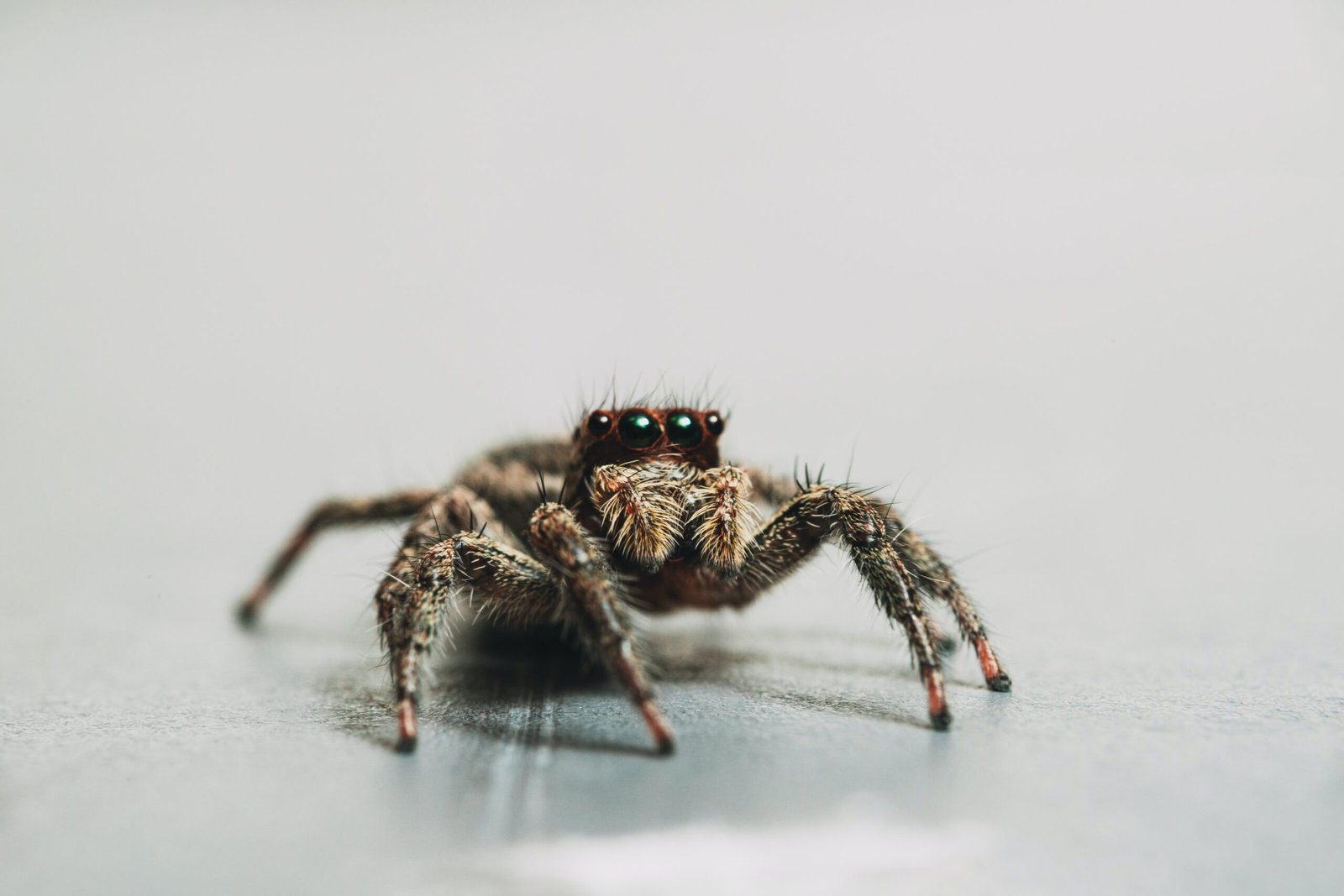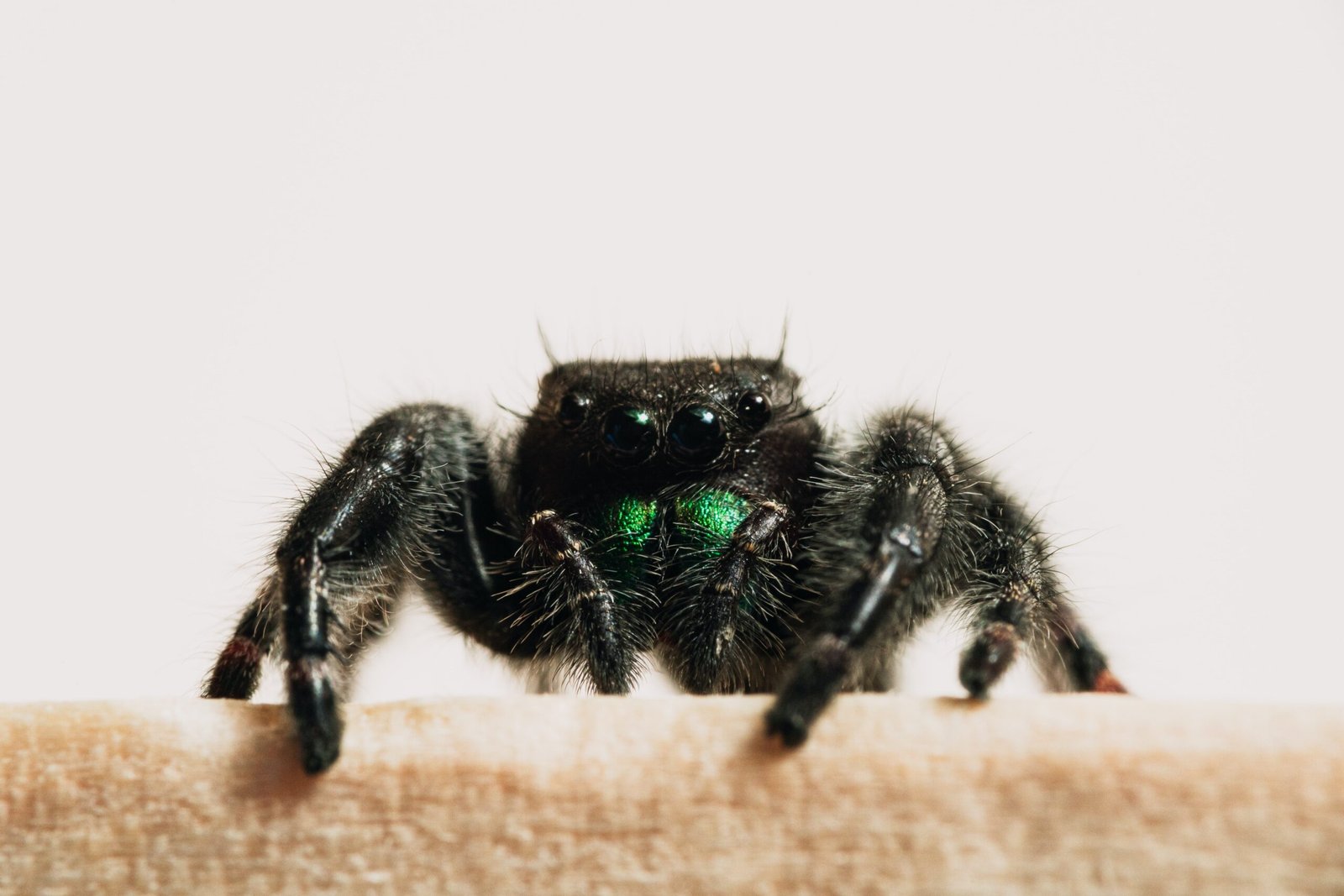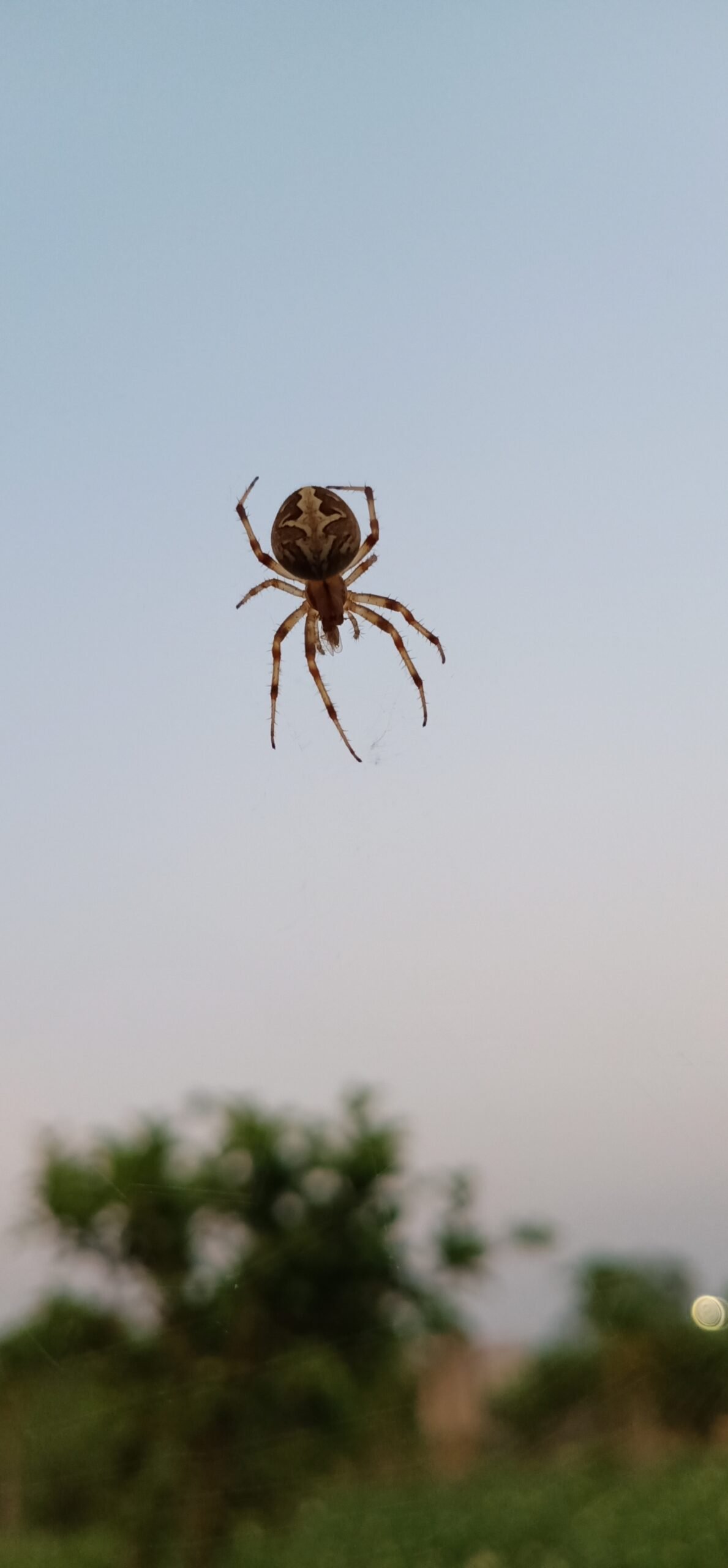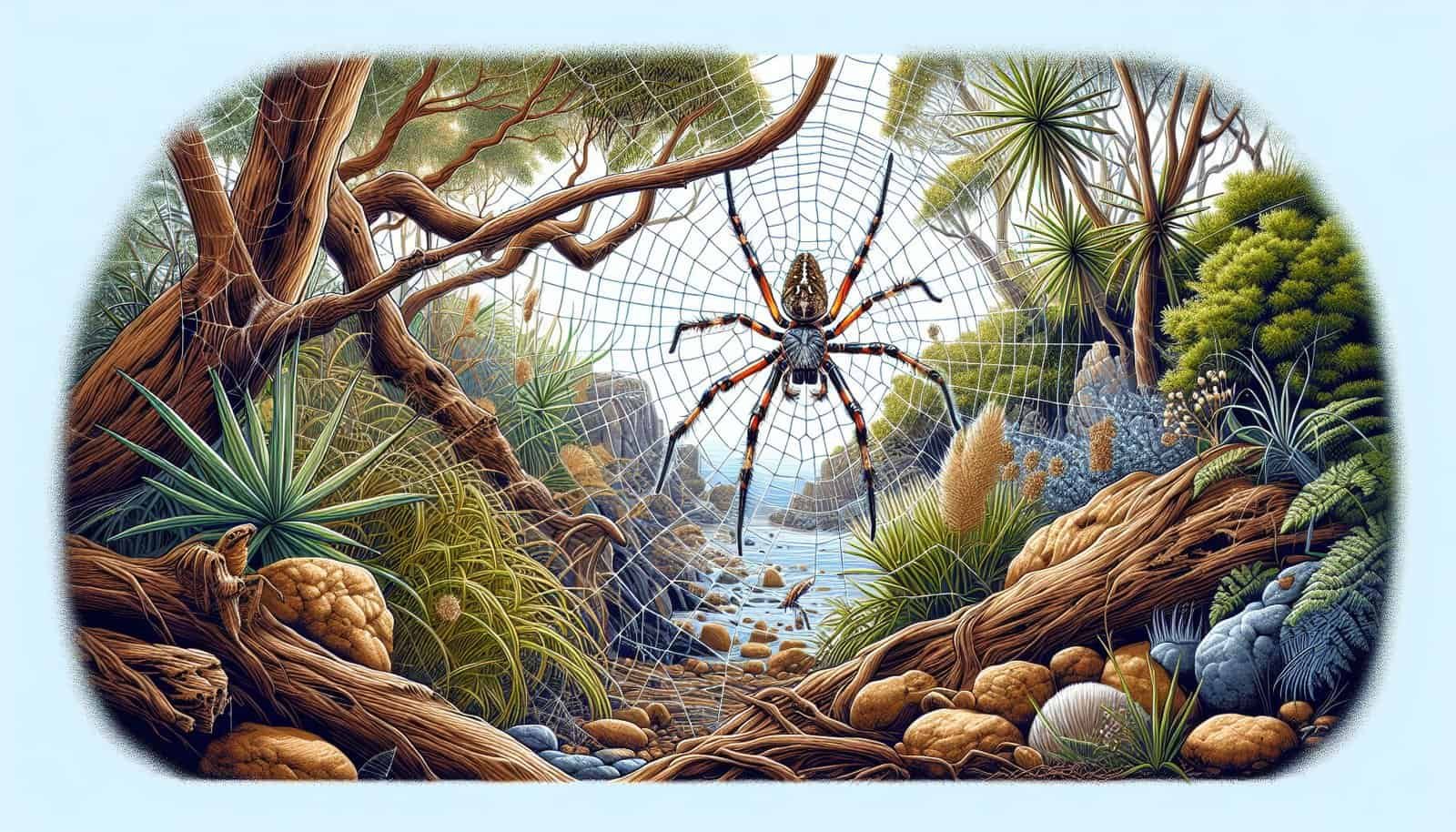Have you ever wondered how researchers are able to recreate the natural habitat of the Australian net-casting spider in a captive environment? It’s a fascinating challenge, but with careful observation and some creative problem-solving, experts have been able to mimic the spider’s unique surroundings. By recreating the specific conditions, such as temperature, humidity, and even the presence of certain prey species, they strive to provide a comfortable and authentic home for these amazing arachnids. In this article, we will explore the methods used to replicate the habitat of the Australian net-casting spider in captivity, giving you a deeper understanding of the techniques behind this remarkable endeavor.

Understanding the Natural Habitat of the Australian Net-Casting Spider
The Australian Net-Casting Spider, scientifically known as Deinopis spp., is a fascinating species that can be found in various regions of Australia. To successfully replicate its natural habitat, it is crucial to understand the unique characteristics and adaptations of this spider.
Australian Net-Casting Spider: Overview
The Australian Net-Casting Spider is a nocturnal hunter known for its unique feeding technique. With their elongated, flat bodies and long forelimbs, they construct and use a “net” made of silk to ambush their prey. These spiders are highly skilled at accurately casting their net to catch unsuspecting insects. Their exceptional vision, agility, and speed make them remarkable predators in their natural habitat.
Natural Habitat of the Australian Net-Casting Spider
In the wild, the Australian Net-Casting Spider is found in a variety of habitats, including forests, woodlands, and shrublands. They prefer areas with dense vegetation, where they can easily conceal themselves and find suitable points to cast their nets. These spiders are most commonly found on trees, logs, and rocks, as well as in leaf litter on the forest floor.
Adaptations of the Australian Net-Casting Spider to Its Habitat
The Australian Net-Casting Spider possesses several adaptations that allow it to thrive in its natural habitat. Their specialized forelimbs are capable of stretching their silk threads, enabling them to cast their nets with precision. Their excellent night vision, aided by large forward-facing eyes, helps them navigate and locate potential prey. Additionally, their elongated bodies and flat shapes allow them to hide among vegetation, camouflaging themselves from predators and prey alike.
Designing the Enclosure
When creating an enclosure for the Australian Net-Casting Spider, it is essential to provide an environment that mimics its natural habitat. Here are some key considerations for designing a suitable enclosure.
Creating a Spacious Enclosure
The enclosure should be spacious enough to allow the spider to move freely, climb, and cast its net comfortably. Providing vertical space is especially important as it enables the spiders to exhibit their natural behaviors, such as climbing trees or foliage to cast their nets from above.
Temperature and Humidity Control
Maintaining appropriate temperature and humidity levels is crucial for successfully replicating the spider’s natural habitat. Research the preferred temperature and humidity ranges for the species you are keeping and invest in suitable heating or cooling devices, as well as a reliable hygrometer to monitor humidity.
Furnishing the Enclosure with Suitable Webbing Surfaces
To encourage natural behavior, it is vital to provide suitable webbing surfaces within the enclosure. Adding branches or vertical structures where the spider can anchor its silk threads allows it to construct webs and practice net-casting behaviors. These surfaces should be sturdy, offering secure attachment points for the spider’s silk threads.
Providing Sufficient Vertical Space for Net-Casting
As previously mentioned, the Australian Net-Casting Spider is known for its ability to cast its net from an elevated position. Therefore, it is essential to provide ample vertical space within the enclosure. This can be achieved by including tall plants, branches, or climbing structures that allow the spider to position itself higher and cast its net downward.
Ensuring Adequate Lighting Conditions
Nighttime lighting is crucial for observing the spider’s natural behavior, as it is primarily active during the dark hours. Installing low-intensity, red- or blue-tinted lighting can provide the necessary illumination without disrupting the spider’s nocturnal habits. Avoid using bright, white lights, as they can be harmful to the spider’s sensitive eyes.
Introducing Hiding Spots and Shelters
To replicate the protection and concealment offered by vegetation in the wild, it is important to provide hiding spots and shelters within the enclosure. This can be achieved by adding artificial plants, pieces of bark, or small hollow structures that mimic the natural hiding spots the spider would seek out in its natural habitat.
Recreating Food Sources
To ensure the well-being and proper nutrition of the Australian Net-Casting Spider, it is crucial to recreate its natural food sources within the captive environment. Here are some steps to consider when replicating its diet.
Researching the Natural Diet
Thoroughly researching the natural diet of the Australian Net-Casting Spider is vital to understand its nutritional requirements. These spiders primarily feed on small insects such as moths, flies, and beetles. Knowledge of their prey preferences will help you provide appropriate food sources.
Offering Live Insects as Prey
To replicate the spider’s natural hunting instincts and behavior, it is recommended to offer live insects as prey. Providing a variety of small insects, such as flightless fruit flies, crickets, and small beetles, will not only satisfy their dietary needs but also stimulate their hunting instincts and provide mental enrichment.
Ensuring Variety in Prey Selection
While it is crucial to offer live insects as the main food source, it is also important to vary the prey selection. This provides a balanced diet and prevents nutritional deficiencies. Introducing different types of insects, both flying and crawling, will help mimic the variety of prey the spider would encounter in its natural habitat.
Maintaining Proper Feeding Techniques
To promote the spider’s health and well-being, it is essential to observe proper feeding techniques. Here are some guidelines to follow.
Observing Feeding Behavior
When feeding the Australian Net-Casting Spider, it is crucial to observe its feeding behavior closely. Take note of how it captures, immobilizes, and consumes its prey. This observation will help you understand the spider’s natural feeding instincts and ensure you provide the appropriate prey size and type.
Using Appropriate Tools for Feeding
To prevent accidental harm to the spider or the prey, it is recommended to use specialized tools for feeding. Tweezers or small tongs can be used to hold the live insects and carefully place them within the spider’s reach. Avoid using your bare hands, as this can result in injury to both you and the spider.
Preventing Overfeeding or Underfeeding
Understanding the spider’s feeding frequency and the appropriate prey size is crucial to prevent overfeeding or underfeeding. Research the species’ typical feeding patterns and adjust your feeding schedule accordingly. Feeding too frequently can lead to obesity and health issues, while underfeeding can result in malnutrition and other health problems.

Providing Suitable Substrate
Creating a suitable substrate within the enclosure is important for the Australian Net-Casting Spider’s overall well-being. Consider the following factors when selecting and preparing the substrate.
Selecting the Right Substrate Material
The substrate should resemble the forest floor or natural habitats where these spiders are commonly found. A combination of leaf litter, soil, and fine wood chips can create a suitable substrate that mimics their natural environment. Avoid using substrates with sharp edges or materials that may be toxic to the spider.
Creating a Moisture Balance
Maintaining the appropriate moisture balance within the substrate is crucial. Some Australian Net-Casting Spider species prefer a slightly moist substrate, while others thrive in drier conditions. Research the specific species you are keeping to determine the ideal moisture levels and adjust watering accordingly.
Avoiding Toxic or Irritant Substrates
Ensure that the substrate materials used do not contain any toxic or irritating substances that could harm the spider. Avoid using substrates treated with chemicals, pesticides, or any potentially harmful additives. It is best to source natural materials from reputable suppliers.
Monitoring and Regulating Environmental Conditions
To ensure the Australian Net-Casting Spider’s health and well-being, it is essential to monitor and regulate the environmental conditions within the enclosure. Here are some key aspects to consider.
Regular Temperature and Humidity Checks
Maintaining consistent temperature and humidity levels is crucial for the spider’s overall health. Regularly monitor temperature and humidity using reliable thermometers and hygrometers. Make adjustments as needed to ensure the conditions remain within the optimal range for the specific species.
Using Proper Ventilation Techniques
Proper ventilation is essential to maintain fresh air circulation within the enclosure. Ensure that the enclosure allows for adequate airflow while preventing drafts or excessive air movement that could stress the spider. Proper ventilation helps regulate temperature and prevent the buildup of excess humidity.
Maintaining Cleanliness and Hygiene
Keeping the enclosure clean is vital to prevent the accumulation of waste, uneaten prey, or mold, which could compromise the spider’s health. Regularly remove any uneaten prey or debris and clean the enclosure using mild, spider-safe cleaning agents. Avoid using harsh chemicals that may be toxic to the spider.
Preventing Excessive Noise or Vibrations
Australian Net-Casting Spiders are sensitive to noise and vibrations, which can cause stress and disrupt their natural behavior. Ensure the enclosure is placed in a quiet area away from loud, sudden noises or vibrations caused by household appliances or heavy-footed movement.

Understanding Behavioral Patterns and Social Needs
To provide appropriate care for the Australian Net-Casting Spider, it is important to understand its behavioral patterns and social needs. Here are some key considerations.
Studying Net-Casting Spider Behavior in the Wild
Observing the behavior of Australian Net-Casting Spiders in the wild can provide valuable insights into their natural tendencies. Study their hunting techniques, web construction, and preferred hiding spots to replicate these behaviors within the enclosure. This will help create an enriching environment that supports their natural instincts.
Providing Appropriate Social Interaction Opportunities
While Australian Net-Casting Spiders are predominantly solitary creatures, providing appropriate social interactions can benefit their overall well-being. This can include introducing a suitable mate during the breeding season or allowing brief periods of interaction with other individuals of the same species, keeping a close eye on their behavior to ensure compatibility and prevent aggression.
Understanding Mating Behavior and Reproduction
Understanding the mating behavior and reproductive needs of Australian Net-Casting Spiders is essential for their care. Research their specific mating rituals, timing, and environmental conditions required for successful breeding. Creating suitable conditions for courtship, egg-laying, and egg incubation will increase the chances of successful reproduction.
Avoiding Potential Hazards and Health Risks
To maintain a safe and healthy environment for the Australian Net-Casting Spider, it is crucial to identify and eliminate potential hazards. Consider the following precautions.
Identifying and Eliminating Toxic Plants
Ensure that the enclosure does not contain any toxic plants that could harm the spider. Research the toxicity of various plants and avoid introducing any that could potentially pose a risk. Also, be cautious when sourcing natural materials from outside, as they may harbor toxic plants or pesticide residues.
Preventing Insecticide Contamination
Carefully choose any products used within or near the enclosure to avoid insecticide contamination. Insecticides can be extremely harmful or fatal to the spider. Avoid using any insecticides or chemicals that may come into direct contact with the spider or its living environment.
Choosing Safe Enclosure Materials
Select enclosure materials that are safe and non-toxic for the spider. Avoid using materials that may splinter, have sharp edges, or contain toxic substances. Non-toxic, natural materials like glass, acrylic, or high-quality plastic are often suitable choices for constructing the enclosure.

Developing a Suitable Feeding Schedule
Establishing a proper feeding schedule is essential for the overall health and well-being of the Australian Net-Casting Spider. Consider the following factors.
Considering Natural Feeding Patterns
Research the natural feeding patterns of the specific species you are caring for. Some Australian Net-Casting Spider species may have specific feeding times or seasons. Understanding their natural feeding patterns will help establish a suitable feeding schedule that closely mimics their wild behavior.
Determining Feeding Frequency
The feeding frequency for Australian Net-Casting Spiders varies depending on the species, age, and individual needs. Research the optimal feeding frequency for the particular species, typically ranging from once every few days to once a week. Monitor the spider’s body condition and adjust the feeding schedule as necessary to maintain a healthy weight.
Adapting the Feeding Schedule as Needed
The feeding schedule may need to be adapted based on various factors, such as changes in the spider’s behavior, body condition, or reproductive status. If the spider exhibits decreased appetite or weight loss, consult with a knowledgeable spider enthusiast or veterinarian to determine the appropriate adjustments to the feeding schedule.
Regular Observation and Evaluation
Regularly observing and evaluating the Australian Net-Casting Spider’s behavior and health is essential for ensuring its well-being. Here are some steps to follow.
Recording Spider Behavior and Health
Maintain a detailed observation log to record the spider’s behavior, feeding habits, molting cycles, and general health indicators. This log will help identify any changes or abnormalities, allowing for timely intervention if needed. Pay attention to any signs of stress, aggression, or unusual behaviors.
Noticing Signs of Stress or Illness
Be vigilant for signs of stress or illness in the spider. These may include decreased appetite, lethargy, abnormal web construction, discoloration, or physical injuries. Promptly identify and address any signs of distress, seeking advice from experienced spider keepers or veterinarians if necessary.
Adjusting the Enclosure and Care Approach Accordingly
Based on your observations and evaluations, make necessary adjustments to the enclosure and care approach. This may include modifying lighting conditions, adjusting temperature and humidity levels, altering feeding schedules, or providing additional hiding spots or enrichment opportunities. Regular assessment and adaptation will help optimize the spider’s overall well-being.
Replicating the habitat of the Australian Net-Casting Spider in a captive environment requires careful attention to detail and meticulous research. By creating an enclosure that closely resembles its natural habitat, providing suitable food sources, maintaining optimal environmental conditions, understanding its behavior, and taking preventative measures, you can provide this fascinating species with a safe and enriching home.

